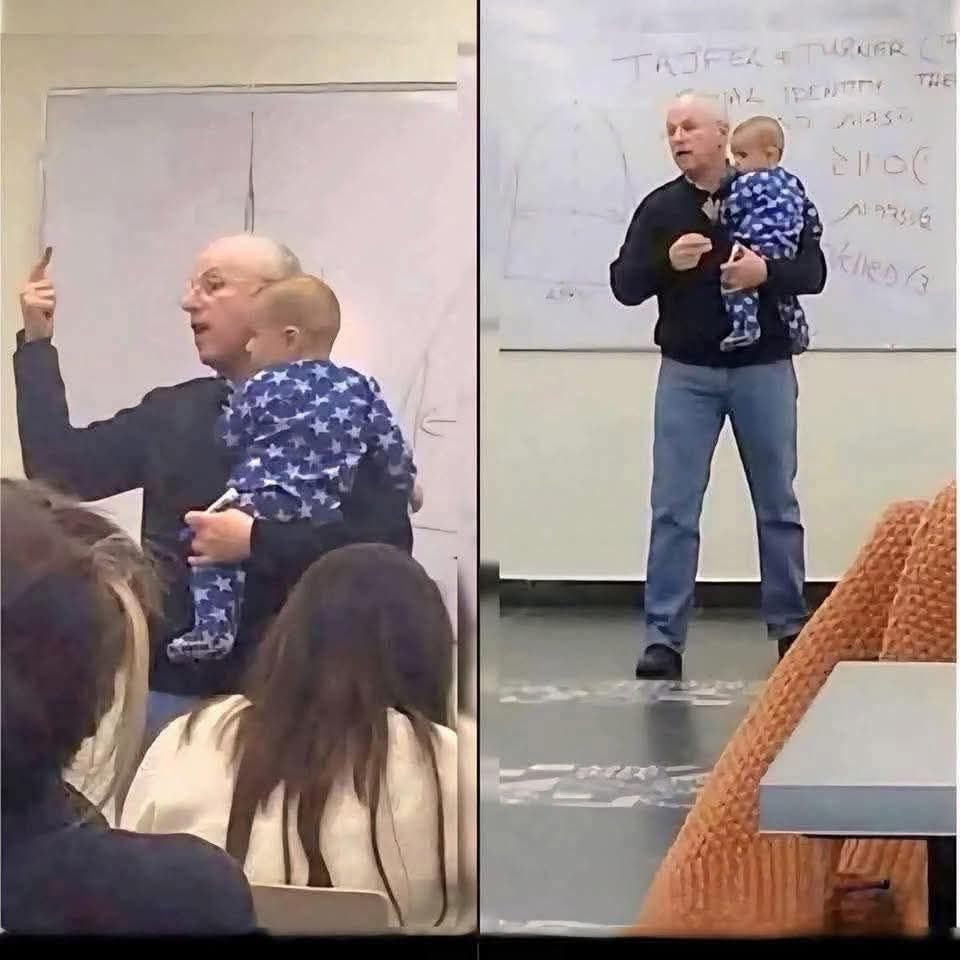During a quiet university lecture, Professor Sydney Engelberg was teaching with calm passion in front of an attentive classroom. Suddenly, the persistent cries of a baby broke the silence. The child, held in the arms of his mother—a young student sitting at the back of the room—immediately drew everyone’s attention. The woman, visibly embarrassed, stood up intending to leave so as not to disturb the class further.
But something unexpected happened. Before the mother could reach the door, Professor Engelberg briefly paused his lecture, calmly walked over, and without saying a word, took the baby into his arms. He then returned to the front of the class and resumed teaching as if nothing had happened, gently cradling the child against his chest. He showed no annoyance, offered no explanations, and made no mention of any rules about children in the classroom.
The students, surprised, watched the scene with awe and deep admiration. They later recounted that the lesson continued with the same clarity and precision as always, while the professor held the baby. It wasn’t an isolated act: Engelberg was already known at the university for his sensitivity toward student-mothers, whom he welcomed into his courses with respect and understanding. He allowed them to breastfeed in class, to bring their children with them, and to care for them without ever making them feel like a burden.
His words, often quoted by his students, conveyed a profound vision: “A mother should never be forced to choose between motherhood and education. Educating a mother is an investment in the entire nation.”
The photograph of that simple yet powerful gesture spread across the world, becoming a tangible symbol of inclusion, respect, and humanity. For many, that was the most important lesson: to educate also means to welcome. And a classroom can be the very first place to learn what it truly means to be human.
Credit -Original Owner ( Respect)
